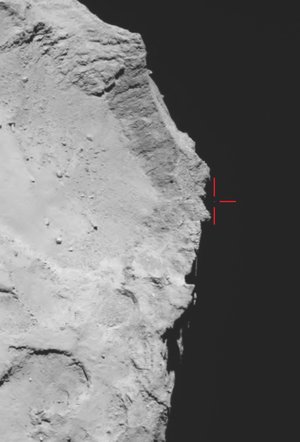Accept all cookies Accept only essential cookies See our Cookie Notice

About ESA
The European Space Agency (ESA) is Europe’s gateway to space. Its mission is to shape the development of Europe’s space capability and ensure that investment in space continues to deliver benefits to the citizens of Europe and the world.
Highlights
ESA - United space in Europe
This is ESA ESA facts Member States & Cooperating States Funding Director General Top management For Member State Delegations European vision European Space Policy ESA & EU Responsibility & Sustainability Annual Report Calendar of meetings Corporate newsEstablishments & sites
ESA Headquarters ESA ESTEC ESA ESOC ESA ESRIN ESA EAC ESA ESAC Europe's Spaceport ESA ESEC ESA ECSAT Brussels Office Washington OfficeWorking with ESA
Business with ESA ESA Commercialisation Gateway Law at ESA Careers Cyber resilience at ESA IT at ESA Newsroom Partnerships Merchandising Licence Education Open Space Innovation Platform Integrity and Reporting Administrative Tribunal Health and SafetyMore about ESA
History ESA Historical Archives Exhibitions Publications Art & Culture ESA Merchandise Kids Diversity ESA Brand Centre ESA ChampionsLatest
Space in Member States
Find out more about space activities in our 23 Member States, and understand how ESA works together with their national agencies, institutions and organisations.
Science & Exploration
Exploring our Solar System and unlocking the secrets of the Universe
Go to topicAstronauts
Missions
Juice Euclid Webb Solar Orbiter BepiColombo Gaia ExoMars Cheops Exoplanet missions More missionsActivities
International Space Station Orion service module Gateway Concordia Caves & Pangaea BenefitsLatest
Space Safety
Protecting life and infrastructure on Earth and in orbit
Go to topicAsteroids
Asteroids and Planetary Defence Asteroid danger explained Flyeye telescope: asteroid detection Hera mission: asteroid deflection Near-Earth Object Coordination CentreSpace junk
About space debris Space debris by the numbers Space Environment Report In space refuelling, refurbishing and removingSafety from space
Clean Space ecodesign Zero Debris Technologies Space for Earth Supporting Sustainable DevelopmentLatest
Applications
Using space to benefit citizens and meet future challenges on Earth
Go to topicObserving the Earth
Observing the Earth Future EO Copernicus Meteorology Space for our climate Satellite missionsCommercialisation
ESA Commercialisation Gateway Open Space Innovation Platform Business Incubation ESA Space SolutionsLatest
Enabling & Support
Making space accessible and developing the technologies for the future
Go to topicBuilding missions
Space Engineering and Technology Test centre Laboratories Concurrent Design Facility Preparing for the future Shaping the Future Discovery and Preparation Advanced Concepts TeamSpace transportation
Space Transportation Ariane Vega Space Rider Future space transportation Boost! Europe's Spaceport Launches from Europe's Spaceport from 2012Latest

Reconstructing Philae’s trajectory
Thank you for liking
You have already liked this page, you can only like it once!
Magnetic field data from ROMAP on Philae, combined with information from the CONSERT experiment that provided an estimate of the final landing region, timing information, images from Rosetta’s OSIRIS camera, assumptions about the gravity of the comet, and measurements of its shape, have been used to reconstruct the trajectory of the lander during its descent and subsequent landings on and bounces over the surface of Comet 67P/Churyumov-Gerasimenko on 12 November 2014. The times are as recorded by the spacecraft; the confirmation signals arrived on Earth 28 minutes later.
Initially, Philae was seen to rotate slowly during the descent to Agilkia. It landed and then bounced, rotating significantly faster as the momentum of the internal flywheel was transferred to the lander. It collided with a cliff 45 minutes later, then tumbled, flying above the surface for more than an hour longer, before bouncing once again and coming to a stop a few metres away, a few minutes later.
The position of the first touchdown point at Agilkia is very well determined from direct images, but the locations of the possible cliff collision depends on the ballistic model used, while the general location marked for the subsequent second and third touchdowns at Abydos come from the CONSERT measurements. Thus, these latter positions represent preliminary and approximate locations only.
The heights above the surface assume a reference sphere centred on the centre of mass of the comet and with a radius of 2393 m reaching first touchdown point.
Full story: Rosetta and Philae find comet not magnetised
Read more about how ROMAP helped to reconstruct the lander’s trajectory in the 28 November 2014 report: Did Philae graze a crater rim during its first bounce?
-
CREDIT
ESA/Data: Auster et al. (2015)/Comet image: ESA/Rosetta/MPS for OSIRIS Team MPS/UPD/LAM/IAA/SSO/INTA/UPM/DASP/IDA -
LICENCE
ESA Standard Licence

Rosetta and Philae investigate magnetic properties o…

Philae’s first bounce

Philae above the comet?

Reconstructing Philae’s flight















 Germany
Germany
 Austria
Austria
 Belgium
Belgium
 Denmark
Denmark
 Spain
Spain
 Estonia
Estonia
 Finland
Finland
 France
France
 Greece
Greece
 Hungary
Hungary
 Ireland
Ireland
 Italy
Italy
 Luxembourg
Luxembourg
 Norway
Norway
 The Netherlands
The Netherlands
 Poland
Poland
 Portugal
Portugal
 Czechia
Czechia
 Romania
Romania
 United Kingdom
United Kingdom
 Slovenia
Slovenia
 Sweden
Sweden
 Switzerland
Switzerland
























